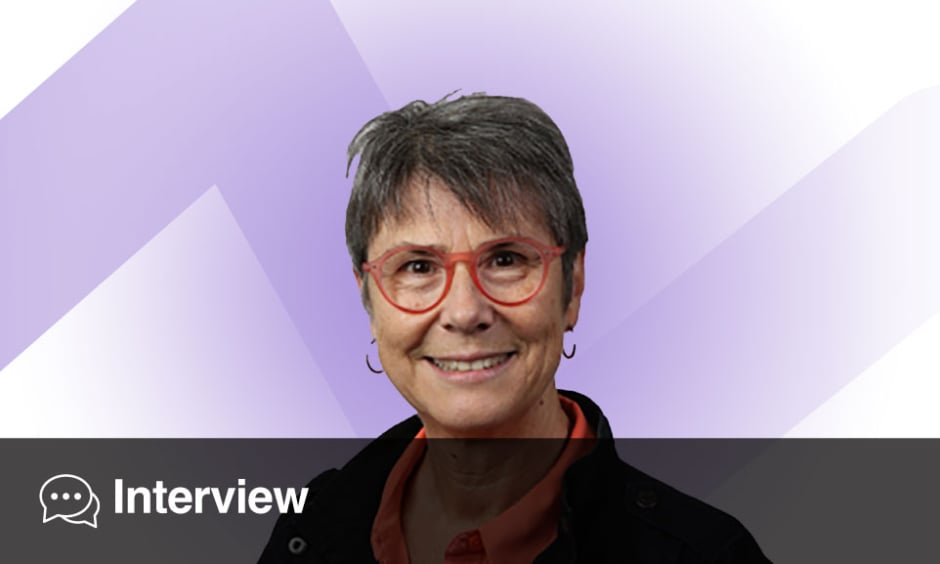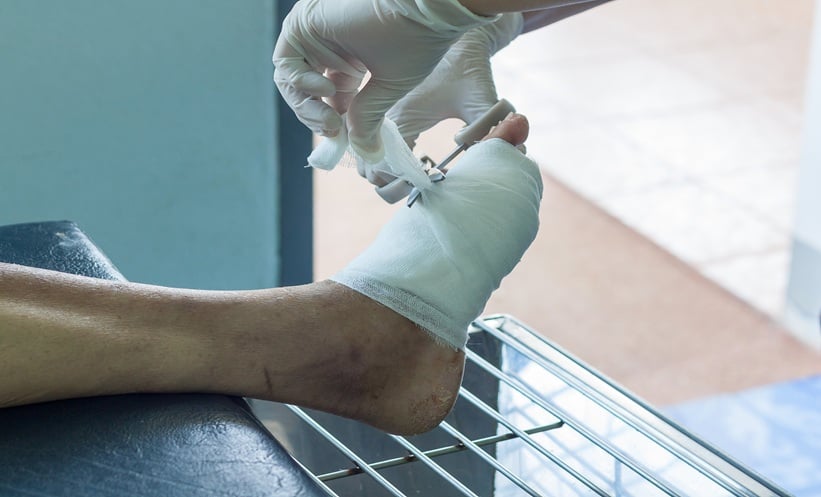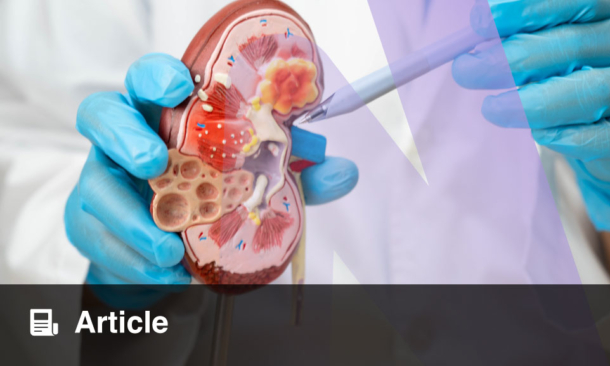Chantal Mathieu | President, European Association for the Study of Diabetes (EASD) Board; Department of Endocrinology, UZ Leuven; Department of Chronic Diseases and Metabolism, KU Leuven, Belgium
Citation: EMJ Diabet. 2025;13[1]:53-58. https://doi.org/10.33590/emjdiabet/KQFU7715
![]()
As the President of the European Association for the Study of Diabetes (EASD) board, and after another successful annual meeting, what have been the most significant changes you have seen in your tenure so far? And how have they impacted patient care?
EASD is something very strange. It’s an association of individual members, including researchers, clinicians, and students; anybody involved in any type of research on diabetes can become an individual member. This association works 365 days a year, and our highlight is indeed our annual meeting, where this year, we attracted almost 14,000 people. But we’re also very active outside of these annual meetings. We have a teaching and education committee making an accredited e-learning platform with formal sit-down modules, where you need to answer evaluations to get your accreditation, but also podcasts and debates; there is a range of formats.
Face-to-face educational sessions are also important. This year, we had a technology school for early-career clinicians. Next year, we will repeat that and have an immunology school for paediatricians and endocrinologists, because the concept of screening for Type 1 diabetes and disease-modifying therapies is coming, and islet transplantation is coming. EASD is more than our annual meeting.
So, what is different during my presidency? I think it’s the spirit. We’re always very serious when it comes to discussing science. We already have a flagship journal, but we just launched a new journal that is also an open-access journal. We have a sister organisation, a foundation for supporting research, and our annual meeting. But it’s always serious. What has changed, I believe, over the last few years is the upbeat, optimistic, positive young vibe. We’re shedding a bit of our stuffy image and becoming quite the dynamic place for learning and for sharing diabetes research. This will hopefully contribute to one day being able to prevent and cure many forms of diabetes.
It is also important to consider the fact that we are recovering from COVID-19. Zoom (Zoom Communications, San Jose, California, USA) and other virtual platforms are a great medium to report research, facilitate the e-learning platform, or live stream the meeting. But what we discovered is that for research to really advance, you need to meet people and network, sit together and brainstorm, and you need to have your mind grow bigger and bigger. Since the COVID-19 pandemic, 4,000 more people have attended our in-person meetings than our virtual meetings. Due to popular demand, especially from young people, we’re having face-to-face meetings again in our education programmes throughout the year. That has been an important lesson for me in the last 3 years of my presidency: the need to have face-to-face interactions alongside our virtual platforms.
EASD has increasingly become a global platform, with strong participation from diverse groups of healthcare professionals and patient communities. How do you ensure that EASD continues to serve this broad and evolving audience?
First of all, when you talk about diversity, there is geographical diversity. We are proud to be the European Association for the Study of Diabetes, but we have participation from virtually every country in the world. To give you an idea, we received 2,170 abstracts, with a 66% acceptance rate, but the country which gave us the most submissions was China, followed by the USA and the UK, so we have submissions from many different places. As a result, we started the global council to advise us on all things global. We just published a manuscript by the global council on global challenges to diabetes research and diabetes care,1 and we just distributed this year’s first global impact prize to a doctor from India, Viswanathan Mohan, Madras Diabetes Research Foundation, Chennai, India.
If you criticise one thing about our annual meeting, it’s that it’s too big. And you have a real fear of missing out, because there are so many things happening at the same time. It was extremely diverse in content and formats, so we catered for all of these stakeholders.
At EASD 2025, a highlight for attendees was the discussion of results from the MELD-ATG2 and Ver-A-T1D (NCT04545151)3 clinical trials, both part of INNODIA, which you led. Could you please explain the significance of this work and how these fascinating results will benefit patients in the future?
First, SURPASS-CVOT (NCT04255433),4 which investigated tirzepatide versus dulaglutide in people with Type 2 diabetes and cardiovascular disease, was presented. Then the following day, two trials in people with new onset, clinical Stage 3, Type 1 diabetes were presented in an early bird symposium. I co-ordinated the INNODIA consortium, where we were looking for novel biomarkers and novel clinical trial designs in people with new onset, Stage 3, Type 1 diabetes. We designed the master protocol, which all of our clinical trials would run on; the two we presented, MELD-ATG and Ver-A-T1D, did just that.
We had our primary outcome at 12 months, being the area under the curve of C peptide stimulated during a 2-hour mixed meal tolerance test. MELD-ATG was a very complex study with an adaptive trial design, testing different doses of anti-thymocyte globulin (ATG) to look for the minimum effective low dose.2 First, we tested 2.5 mg/kg in people with new onset, clinical Stage 3, Type 1 diabetes, but what was new was that we tested this dose in children as young as 5 years old to adults at 25 years of age, compared to placebo. This was a double-blind study, and we then had three doses of ATG lower than 2.5 mg and a dose-determining committee, which was unblinded, deciding which of those to drop progressively. They decided to keep only one out of the 0.1 mg, 0.5 mg, and 1.5 mg doses. On the basis of biomarkers, for instance, the cluster of differentiation (CD) 4:CD8 ratio, they chose to drop 0.1 mg and 1.5 mg, leaving us with three arms that were well powered to allow us to conclude something: the 0.5 mg, the 2.5 mg, and the placebo arms.
What we demonstrated was that 2.5 mg/kg ATG, just like Michael Haller, College of Medicine, University of Florida, Gainesville, USA, showed, was able to delay the destruction of β cells in people with Type 1 diabetes, as shown by stimulated C peptide. We also showed that the 0.5 mg dose was effective, and that was accompanied by far fewer side effects, meaning less cytokine release syndrome, for instance, during the infusion, and also less serum sickness. The adaptive trial design, very low dose of ATG, and young people involved are the main sources of excitement around this trial. It’s also because ATG is an old, repurposed drug that’s been used in transplantation for more than 30 years; it opens up new venues, especially because a small company, SAB BIO, Florida, USA, is now making humanised ATG. So, by the end of this year, a new trial will start with humanised ATG, which doesn’t include serum sickness anymore.
The Ver-a-T1D, again, ran on the INNODIA master protocol. It was a simpler trial design: single arm placebo, and the other arm, verapamil, which is another repurposed drug used to treat arrhythmia, given at a 360 mg dose. We also looked at stimulated C peptide. But this was a study run in adults above the age of 18 years, and this one did not reach its primary endpoint. It had a p value of 0.06, which was on the verge of statistical significance, but not when you looked at the curve. What was striking was that verapamil was a bit better than placebo, but the placebo didn’t move a lot. To me, the big conclusion seemed to be that, in adults, the C peptide decline isn’t very fast. When we went back to our MELD-ATG study and looked specifically at the small group of adults we had, we also didn’t see a lot of change in placebo. We probably need to reconsider the way we do our trials in Type 1 diabetes, because regulators force us to perform trials in adults first to show safety before trialling children. However, drugs are often discarded as potentially interesting agents because they don’t work in adults, even though they may have worked in children. This is really a call for regulators to allow us to perform our trials in children more rapidly than we are now. The summary of these two trials was that adaptive trial designs allow you to make conclusions very rapidly regarding multiple things, and you can do these trials in children.
A strong theme of EASD 2025 was precision medicine. What do we need to achieve, scientifically and systematically, to reach a future where diabetes can be treated both universally, and with high precision?
To me, precision medicine is the pathway to personalised treatments. It starts with very basic variables of age, BMI, C-peptide levels, antibodies, and then biochemical biomarkers that we know, as well as all the emerging ones. I do believe in the evolution, as Andrew Hattersley, University of Exeter, UK, discussed in his Claude Bernard lecture, the way to go is what they did. For instance, they made an application where you can fill in patient characteristics and some biomarkers, and then they tell you the probability of someone having Type 1 diabetes or a monogenic form. I believe that where we’re going is that we, as clinicians, will have a set of clinical markers and biochemical markers that we will plug in to get advice saying, for example, that this is a person with a lot of autoimmunity, but is also obese, so choose this therapy.
To me, precision medicine is the way to go, because as a clinician, you just see the heterogeneity of all the people in front of you. I think the traditional nomenclature of Type 1, Type 2, and so on will disappear. It will be an individual with components. There are some people who have typical Type 2 diabetes and some people with typical Type 1 diabetes, but many will be somewhere in between.
We’ve seen a surge in the adoption of AI and hybrid closed-loop systems in diabetes care. How do you see these technologies continuing to reshape both treatment and medical education?
Our hybrid closed-loop systems, automated insulin delivery systems, have changed the face of Type 1 diabetes. But these hybrid closed-loop systems are still mostly algorithm-based. AI is just entering the stage, but it will be standard of care very, very soon in most people with Type 1 diabetes. This is what we will be using until we cure this disease. It makes such a difference for the burden of disease and education. It can be an issue because we have to educate medical students on all of these new technologies, and it’s not easy. I have 12 hours in the whole medical curriculum to talk about diabetes, from beginning to end, from Type 1 diabetes, Type 2, and everything else. Imagine that I have only half an hour to show medical students the pumps and explain what they are and how they work. I can only really show them what they are, but that’s it.
With so many thrilling sessions at this year’s Annual Meeting, what do you think will be the main focuses for EASD 2026?
The Programme Committee actually got together on the day before the Annual Meeting and put together a framework for the programme for next year. They will meet again in May because we have a deadline in April, when our membership can also propose topics for symposia. So, there’s a big input from the membership on the programme and where the focus will be. I do predict a lot of focus on Type 1 and Type 2 diabetes, obesity, technology, disease-modifying therapies, the incretin-based field, screening, and the early detection of Type 1 diabetes will be present. I also predict the islet transplantation field will be coming to the forefront. There will be the presentation of the new American Diabetes Association (ADA)/EASD consensus on the treatment of hyperglycaemia in people with Type 2 diabetes. The second clinical guideline by EASD, on the use of continuous glucose monitoring in Type 2 diabetes, will also be there. There will be a lot of exciting things. Then, of course, I think the real theme throughout the conference will be precision medicine and the need for more personalised treatment.
You’ve long been a powerful advocate for supporting women in science, both in research and clinical care. Since championing this cause, what progress have you seen? And what more should the field be doing to improve gender equity in science?
Yes, I have indeed always done my best to promote women in science. It’s not on purpose, as I always choose the best person to be my PhD student or my postdoc; I like a good mix. It doesn’t work if it’s only women, and it doesn’t work if it’s only men; we need each other and very diverse profiles. A good mix of characters is the best. But indeed, it’s not easy. What we have done in EASD is to have, as much as possible, men and women as chairs in our annual meetings, because it’s so important for young women to have role models and to see that it’s not always ‘Mr. Chairman’, it’s just Chair, and women can chair and lead. We shouldn’t underestimate that. It is also important to have people of all ethnicities and backgrounds. For example, my grandmother was disabled. So, as a child, I grew up in a lot of organisations with disabled people, and that was so important for me. I believe that if we have a diverse group of people on the stage, others will see that and think, ‘if they can do that, I can do that too.’ This is vitally important for ensuring that everyone gets equal opportunities.
Looking back on your vast contributions in the field of diabetes, what legacy do you hope to leave for the next generation of diabetes researchers and clinicians you have inspired?
Lose all ego, lose all individualism, and collaborate. I always use Benjamin Franklin’s (founding father, USA) statement, “we must all hang together, or assuredly we shall all hang separately.” I’m a very impatient woman, and I’m sad when I think of the time we have lost in the last 20–30 years, for instance, in the domain of Type 1 diabetes, because of the egos of professors who want to cure it. Let’s share. Let’s work together. Life is too short, and our stay on this planet is too short to be individualists. We need to work together. Only when you work together do you progress, and only when you work together do you have fun. That is, I hope, my legacy.








